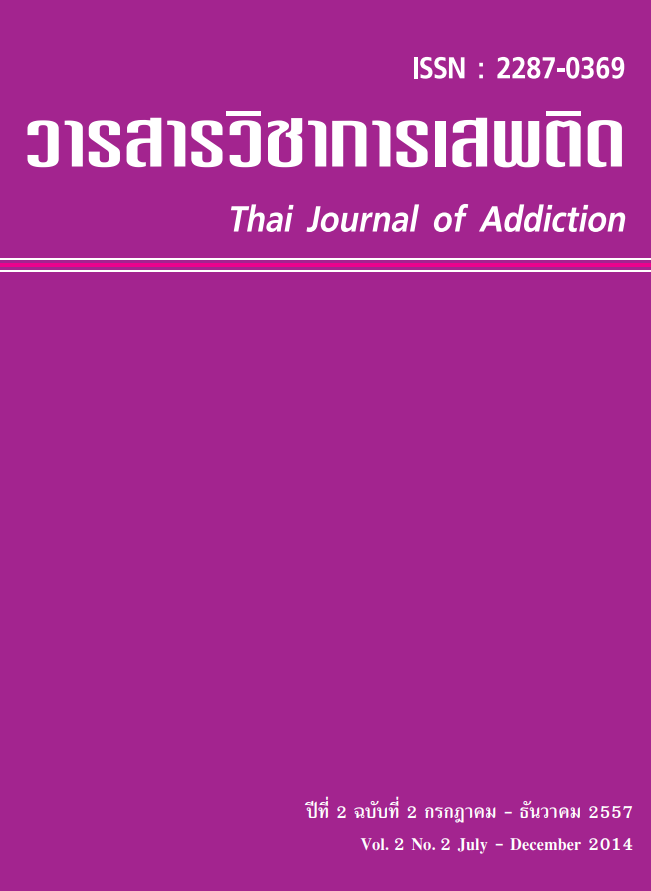FAST Model: The evolution of rehabilitation for substance abuse treatment in Thailand
Keywords:
rehabilitation, substance abuse treatmentAbstract
Thanyarak Institute, under Thailand’s Department of Medical Services (DMS), Ministry of Public Health (MOPH), adopted the drug addiction treatment modality referred to as; Therapeutic Community Model (TC) from Sweden, with full support of the United Swedish Foundation of Sweden (UNISWED). TC utilization was originally initiated primarily for heroin and alcohol dependence, which Thanyarak Institute successfully applied for the first several years following adoption. However, over time the drug use problem in Thailand has changed in regards to substances of abuse, with more than half of all in-patient clients at Thanyarak Institute admitted were using powerful methamphetamines, which carry the street name of “Yaba”. Concurrently, the drug abuser profile changed to include younger drug abusers, many in their teenage years. Therefore, Thanyarak Institute had to develop the TC model into the
FAST model, to include younger methamphetamine drug abusers. Meanwhile, the MATRIX program defined below, which is similar to FAST, was also adopted in Thailand. Included within MATRIX is the concept of brain addiction which must be considered. Importantly, the FAST model core program includes family participation, alternative treatment activities, client support within self-help groups and a shortened time of treatment to 16 weeks. After more than ten years of using the FAST Model at Thanyarak Institute, and notably in other treatment centers in Thailand, the result of rehabilitation was more effective when comparing with the original Thailand TC. When clients completed the full course of the FAST Model, during follow-up after one year, the drug abstinence rate observed was more than 95%. FAST Model, however, is less suitable for the clients having chronic addiction disease and resulting brain addiction destruction. The present challenge is to continue development of appropriate rehabilitation treatment programs which include after-care programs, for drug abusers, to help prevent their remission and to allow for long-term abstinence from drug abuse.
References
Nipa Neeskul, editors. Textbook of Addiction Medicine. Bangkok : The War Veterans
Organization of Thailand Print; 2005.
2. Michael and Lean. And L. godbo is. Outcome Management Report 2001. The matrix
Institute; 2001.
3. Thanyarak Institute. FAST Model. 3rd ed. Bangkok : The War Veterans Organization of
Thailand Print; 2003.
4. Fernando B. Perfas. Overview of the Therapeutic Community. Handout for Trainee at
DAYTOPS International, New York USA; 2013.
5. Smith LA, Gates S, Foxcroft D. Therapeutic Communities for substance related disorder
(Review). The Cochrane Collaboration and published in The Cochrane Library; 2008.
6. Thanyarak Institute. statistic collecting data from IT section of Thanyarak Institute;
2014.



